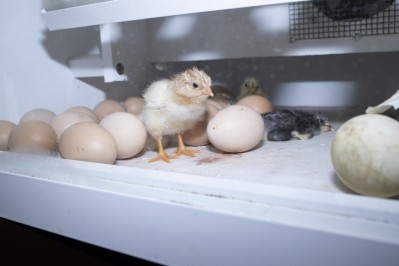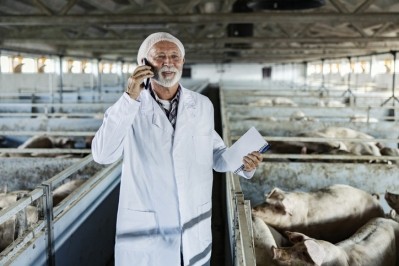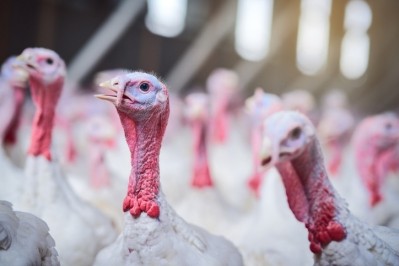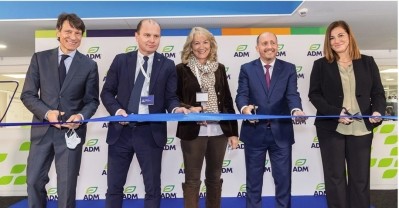Slower growing strains of broiler breeders may alleviate welfare concerns, improve production metrics

“Science-based information about the performance and welfare of slower growing broilers and broiler breeders is very limited,” reported the authors of a study in Poultry Science: Stephanie Torrey and Aitor Arrazola, from the Department of Animal Biosciences, University of Guelph, in Ontario.
Current commercial strains of broiler breeders can only achieve an optimal reproductive performance under feed restriction, they noted.
However, chronic feed restriction in broiler breeders is a welfare concern because of physiological and behavioral signs of hunger, lack of satiety, and frustrated feeding motivation.
“These indicators include signs of distress and poor welfare such as elevated plasma corticosterone concentration (Savory et al., 1996; de Jong et al., 2003), high heterophil to lymphocyte ratio (Savory et al., 1996), basophilia (Arrazola et al., 2019), fault bars in plumage (Arrazola et al., 2019, 2020b), and the performance of abnormal repetitive behavior (Morrissey et al., 2014b; Arrazola et al., 2020a), severe feather pecking (Girard et al., 2017a), and overdrinking (Sandilands et al., 2005).
“Consequently, broiler breeders develop poor feather coverage and have high water usage during rearing (Sandilands et al., 2006; Morrissey et al., 2014a; van Emous et al., 2015), resulting in high litter moisture and pododermatitis (Arrazola et al., 2019).”
Torrey and Arrazola outlined how using slow growing strains can reduce or remove the need for feed restriction in broiler breeder production: “Alternative broiler breeder strains have a slower growth rate and require lower levels of feed restriction than conventional broiler breeder strains to achieve an optimal reproductive performance (Heck et al., 2004; Jones et al., 2004).”
Overall, slower growing strains of broiler breeders may alleviate welfare concerns and lead to a more efficient and sustainable production system, according to the authors.
The study
The University of Guelph researchers decided, therefore, to set about assessing the welfare and performance of slower growing broiler breeders during rearing.
In their study, a total of 360 broiler breeder chicks from three female strains (100 chicks per strain) and two male strains (20 and 40 chicks per strain) were raised in four identical pens per strain.
Strain B and C - pullets - and X - cockerels - were slower growing strains, and strain A - pullets and Y – cockerels - were intermediate growing strains.
They outlined how birds were weighed and scored individually for footpad lesions, hock burns and feather coverage. Data were analyzed using generalized linear mixed models with pen nested in the models and age as a repeated measure.
Findings
The findings, said the team, indicate that slower growing broiler breeders (pullets and cockerels) showed good welfare with few signs of distress, no signs of feather pecking, and low feeding motivation, competition, and frustration, acceptable performance such as good body weight uniformity and fleshing, and low production costs as in low cumulative feed intake per bird.
Weighing in further on those results, they noted that feeding cost is a major economic factor in broiler breeder production and lower cumulative feed intake per bird can lower production cost.
"In our study, the cumulative feed intake was lower in slower growing broiler breeder pullets (7.7–7.8 kg/pullet) compared to conventional pullets (Ross 308 and 708: 7.8 to 8.2 kg/pullet; Aviagen, 2016a,b).
"Slow growing pullets (strain B and C) had lower cumulative feed intake during rearing than intermediate growing pullets (strain A), although strain A pullets were more efficient due to higher body weight gain.
"These differences in the cumulative feed intake can relate to differences in feed efficiency, growth rate, and nutritional requirements among strains. Thus, the development of feeding programs and nutrient specifications for these alternative strains are needed to optimize feed allotment and achieve a slow growth rate and a healthy and mature body conformation."
Overall, more research is required on strain-specific management, nutrient requirements, and housing conditions during rearing and lay to maximize the production and well-being of these alternative strains, concluded Torrey and Arrazola.
Source: Poultry Science
DOI: https://doi.org/10.1016/j.psj.2021.101434
Title: Welfare and performance of slower growing broiler breeders during rearing
Authors: A Arrazola, S Torrey








